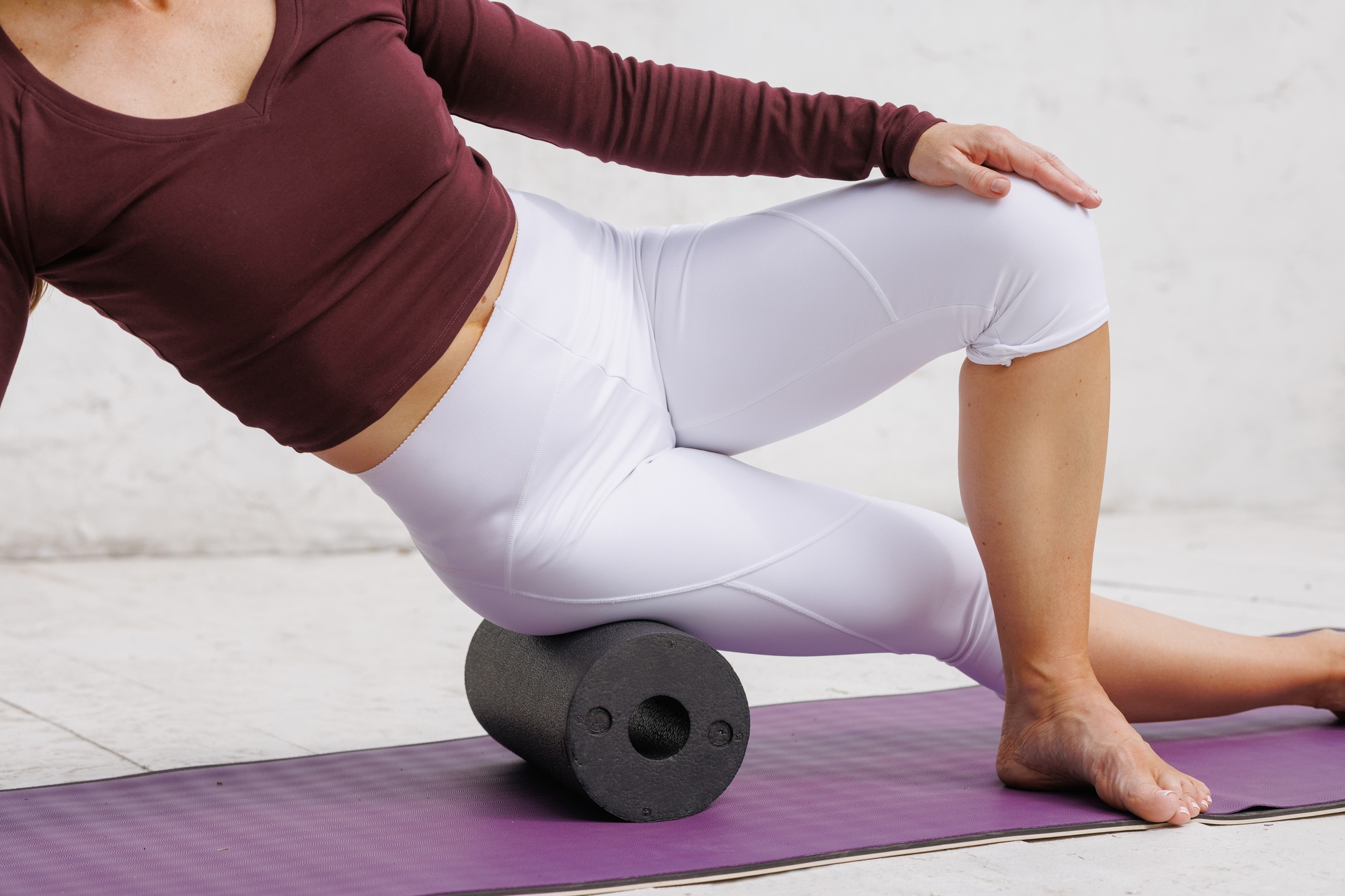Foam Rolling Guide: Best Techniques for Muscle Recovery
Introduction
If you’ve ever felt stiff, sore, or tight after a workout, you’ve probably heard someone say: “You should try foam rolling!”
Foam rolling, also known as self-myofascial release (SMR), is one of the most effective — and affordable — recovery tools available. Whether you’re an athlete, gym-goer, or someone who just spends long hours sitting at a desk, foam rolling helps release muscle tension, improve mobility, and speed up recovery.
In this ultimate guide, we’ll cover:
- What foam rolling is (and the science behind it)
- The benefits for muscle recovery
- The best techniques for each muscle group
- Common mistakes to avoid
- A step-by-step foam rolling routine you can start today
Let’s dive into the world of foam rolling and discover how to make it part of your fitness and wellness routine.
🔹 What is Foam Rolling?
Foam rolling is a self-massage technique that uses a cylindrical foam roller to apply pressure to muscles and fascia (the connective tissue surrounding muscles).
When muscles are overused, tight, or stressed, they can develop knots or trigger points. Foam rolling helps break up these adhesions, increase blood flow, and restore normal function.
👉 Think of it as giving yourself a deep tissue massage — anytime, anywhere, for free.
🔹 The Science Behind Foam Rolling
Foam rolling works by:
- Increasing Blood Flow 🩸
- Rolling over muscles stimulates circulation, delivering oxygen and nutrients needed for repair.
- Myofascial Release 🧩
- Fascia can get stiff and restrict movement. Foam rolling restores elasticity and mobility.
- Neuromuscular Relaxation 🧠
- Applying pressure sends signals to the nervous system, telling muscles to relax.
- Improved Range of Motion (ROM) 🤸
- Studies show foam rolling can temporarily improve flexibility and joint mobility, making it a great warm-up tool.
🔹 Benefits of Foam Rolling
Foam rolling isn’t just a trend — it comes with proven benefits:
✅ Faster Muscle Recovery – Reduces soreness (DOMS) after workouts
✅ Improved Flexibility & Mobility – Increases range of motion
✅ Injury Prevention – Keeps muscles and fascia healthy
✅ Better Performance – Prepares muscles for strength and endurance
✅ Stress Relief – Acts like a massage to reduce tension
✅ Affordable & Convenient – A one-time purchase gives lifelong benefits
🔹 Types of Foam Rollers
Not all foam rollers are created equal. Here’s a breakdown:
- Standard Foam Roller
- Medium density, good for beginners.
- Balanced comfort and effectiveness.
- Soft Foam Roller
- Less pressure, best for beginners or sensitive muscles.
- Firm Foam Roller
- Deeper pressure, better for experienced users.
- Textured / Grid Foam Roller
- Has ridges or bumps for trigger point release.
- Vibrating Foam Roller
- High-tech option that enhances muscle relaxation.
🔹 Best Foam Rolling Techniques for Muscle Recovery
Here’s a step-by-step guide to foam rolling the most common tight muscle groups.
1. Quads (Front of Thighs)
- How to do it:
- Lie face down with the foam roller under your thighs.
- Support yourself with your forearms.
- Roll from your hips to just above your knees.
- Duration: 30–60 seconds per leg.
2. Hamstrings (Back of Thighs)
- How to do it:
- Sit on the floor, roller under your thighs.
- Support with your hands behind you.
- Roll from glutes to just above knees.
- Tip: Cross one leg over the other for more pressure.
3. Glutes (Butt Muscles)
- How to do it:
- Sit on the roller, cross one ankle over the opposite knee.
- Lean toward the glute of the crossed leg.
- Roll slowly back and forth.
4. Calves
- How to do it:
- Place roller under calves.
- Lift hips off the ground with hands.
- Roll from ankles to just below knees.
5. IT Band (Outer Thigh)
⚠️ Can be intense!
- How to do it:
- Lie on your side, roller under outer thigh.
- Roll from hip to just above knee.
- Tip: Adjust pressure with supporting leg.
6. Upper Back (Thoracic Spine)
- How to do it:
- Lie on your back, roller under shoulder blades.
- Support your head with hands.
- Roll from mid-back to upper shoulders.
7. Lats (Side of Back)
- How to do it:
- Lie on your side, roller under armpit.
- Extend your arm overhead.
- Roll from armpit to mid-back.
🔹 When to Use Foam Rolling
Foam rolling can be used at different times for different effects:
- Before Workouts (Warm-Up):
Prepares muscles, increases blood flow, improves range of motion. - After Workouts (Cool-Down):
Helps reduce soreness, aids recovery. - On Rest Days:
Keeps muscles loose and improves circulation.
🔹 How Long Should You Foam Roll?
- 30–60 seconds per muscle group is generally effective.
- Avoid rolling too quickly — slow, controlled movements work best.
- Total session: 10–20 minutes depending on your needs.
🔹 Common Foam Rolling Mistakes
❌ Rolling too fast – Move slowly to release tension.
❌ Spending too long on one spot – Can cause bruising or irritation.
❌ Rolling directly over joints or bones – Stick to soft tissue only.
❌ Poor posture while rolling – Engage your core and protect your lower back.
❌ Skipping breathing – Deep breathing enhances relaxation.
🔹 Foam Rolling Routine for Full-Body Recovery
Here’s a sample 15-minute foam rolling routine:
- Quads – 1 min
- Hamstrings – 1 min
- Glutes – 1 min
- Calves – 1 min
- IT Band – 1 min each side
- Upper Back – 1 min
- Lats – 1 min each side
👉 Repeat on sore or tight areas as needed.
🔹 FAQs About Foam Rolling
Q1: Is foam rolling painful?
Mild discomfort is normal, but it shouldn’t be unbearable. Think “good pain,” not sharp pain.
Q2: Can foam rolling replace stretching?
No. Foam rolling improves muscle recovery, but stretching improves flexibility. Both are beneficial.
Q3: How often should I foam roll?
3–5 times per week is ideal, but daily use is safe.
Q4: Can beginners use foam rollers?
Yes! Start with a softer roller and shorter sessions.
Q5: Is foam rolling safe for everyone?
Most people can use foam rolling, but those with injuries or medical conditions should consult a doctor first.









Leave feedback about this